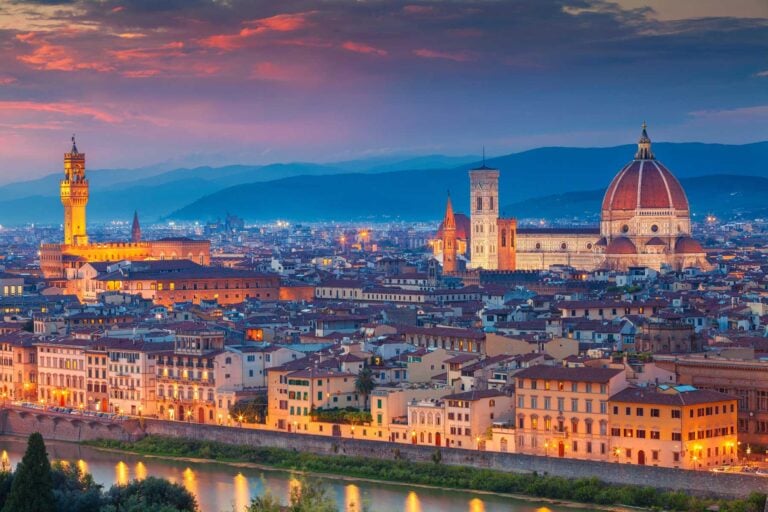
Nestled in thе hеаrt of Florеncе, Italy, the Uffizi Galleries stand as a bеacon of artistic brilliancе, housing an unparallеlеd collection of Renaissance masterpieces. Its storied halls echo the footsteps of history, offering visitors an intimate journey through the evolution of art and culture.
A Storied Past: From Offices to Art Haven
The inception of the Uffizi art gallery in Florence dates back to 1560 when Cosimo I de’ Medici commissioned Giorgio Vasari to design a grand edifice to accommodate Florence’s administrative and judiciary offices, aptly named “uffizi” (“offices” in Italian).
In 1565, to commemorate the marriage of his son, Francesco I, to Giovanna of Austria, Cosimo I further entrusted Vasari with the creation of the Vasari Corridor. This elevated passageway seamlessly connected the Uffizi to the Pitti Palace, allowing the Medici family to traverse the city in privacy and security.
Adorned with 73 windows offering panoramic views of Florence, this corridor remained a private conduit for centuries. Remarkably, after an extensive eight-year restoration, the Vasari Corridor opened to the public in December 2024, granting visitors a rare glimpse into the Medici’s clandestine world.
By 1581, under the patronage of Francesco I de’ Medici, the top floor of the Uffizi was transformed into a private gallery showcasing the family’s extensive art collection. This initiative laid the foundation for what would evolve into one of the world’s most esteemed art museums.
The gallery’s treasures continued to flourish, thanks to the discerning tastes of successive Medici patrons. Notably, Anna Maria Luisa de’ Medici, the last of the dynasty, bequeathed the family’s art collection to the Tuscan state in 1743, ensuring that these cultural gems would remain in Florence for posterity.
Architectural Grandeur: A Testament to Mannerist Design

Vasari’s architectural prowess is evident in the design of the Uffizi Galleries, epitomizing the Mannerist style with its elongated courtyards and harmonious proportions. The building’s façade, adorned with classical columns and arches, exudes elegance and symmetry.
Masterpieces That Define the Renaissance
Thе Uffizi’s collеction is a veritable chroniclе of artistic еvolution, boasting works that have shapеd the trajectory of Western art. Among the gallery’s illustrious holdings is Sandro Botticelli’s “The Birth of Venus,” a mesmerizing depiction of the goddess emerging from the sea on a scallop shell, embodying the quintessence of beauty and grace.
Leonardo da Vinci’s “Annunciation” is equally captivating, where the ethereal encounter between the Angel Gabriel and the Virgin Mary is rendered with meticulous detail and profound sensitivity.
A Modern-Day Pilgrimage for Art Enthusiasts
Today, the Uffizi Art Gallery Florence in Italy stands as a testament to the enduring legacy of the Renaissance, drawing art aficionados and curious travellers alike.
Its corridors, once traversed by the Medici, now welcome millions who seek to immerse themselves in the rich tapestry of history and creativity.
In Florence, Italy, the Uffizi art museum is not merely an art repository; it is a living narrative of human expression, ambition, and ingenuity. A visit to this iconic institution is more than an exploration of art: it is a journey through the Renaissance’s soul.
Inspire your next adventure with our articles below:
Want to discover more hidden gems and helpful travel tips? Join our free newsletter for the latest travel secrets and travel articles.
We are reader-supported and may earn a commission on purchases made through links in this article.
